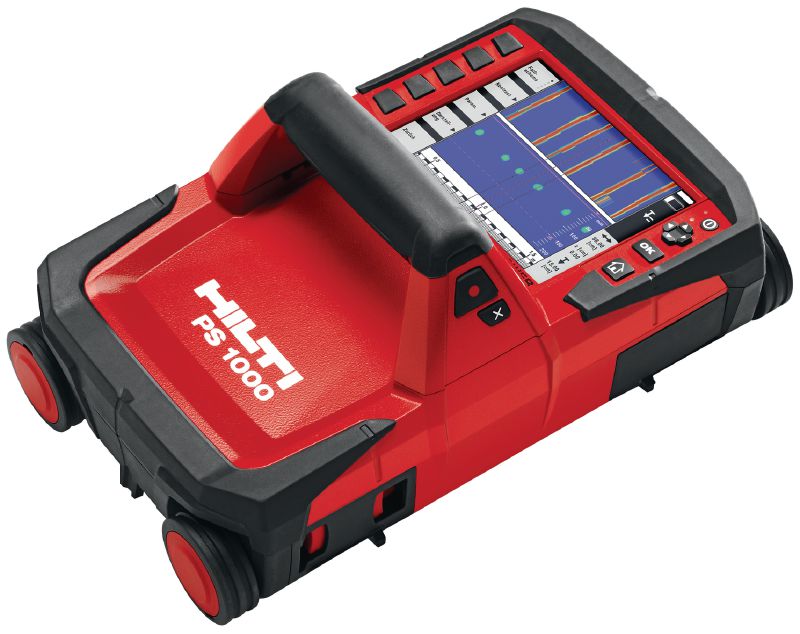Discover Hidden Obstacles with RainierGPR Concrete Scanning Innovation
Wiki Article
Discovering the Trick Benefits of Concrete Scanning in Building Projects
In the realm of contemporary building techniques, the application of concrete scanning modern technology has arised as a critical tool for making sure project effectiveness and architectural integrity. From improving security steps to properly spotting energies concealed underneath the surface, the benefits of concrete scanning are diverse. RainierGPR Concrete Scanning.Enhanced Safety Procedures
Using innovative concrete scanning technology improves precaution on construction websites by providing exact detection of possible threats hidden below the surface area. This technology enables construction groups to recognize rebar, channels, post-tension wires, and other obstructions before excavation or exploration, substantially reducing the threat of accidents. By determining these elements precisely, workers can stay clear of destructive crucial architectural components, therefore avoiding injuries, hold-ups, and expensive fixings.
Additionally, concrete scanning plays a crucial role in ensuring the integrity of existing frameworks throughout improvements or expansions. By detecting weak points, spaces, or deterioration within concrete components, designers can attend to these issues proactively, boosting the total safety and long life of the building. This aggressive strategy not only reduces the risk of architectural failures yet likewise lessens the capacity for crashes brought on by unexpected structural deficiencies.
Essentially, the execution of concrete scanning technology works as a proactive safety and security procedure that safeguards both construction employees and the architectural honesty of structures, ultimately adding to the total success and effectiveness of building and construction jobs. - RainierGPR Concrete Scanning
Accurate Discovery of Energies
Concrete scanning innovation facilitates exact recognition of below ground energies, improving building and construction site safety and efficiency. Exact detection of energies is vital in construction jobs to prevent expensive problems, task delays, and most significantly, guarantee the safety of workers and the general public. By utilizing advanced scanning technologies such as ground-penetrating radar (GPR) and electromagnetic induction, construction groups can draw up the location of hidden pipelines, wires, and other utilities with high degrees of precision.

Time and Price Efficiency

Concrete scanning modern technology allows building teams to accurately situate rebar, post-tension cords, and other ingrained items within concrete frameworks. This exact info aids in preventing pricey errors such as unintentional damage to crucial aspects during boring, cutting, or coring tasks. Additionally, by recognizing possible dangers beforehand, the requirement for expensive repair services or revamp as a result of damages can be minimized, leading to set you back savings for the job.
In addition, the capability to promptly and accurately identify utilities underneath the surface without creating any damage not just conserves time however likewise protects against costly interruptions to existing framework. In general, the moment and cost effectiveness benefits of concrete scanning make it an important tool for boosting building and construction project management and execution.
Conservation of Structural Stability
Preserving the architectural stability of buildings and framework is critical in ensuring lasting stability and safety. Concrete scanning plays an you could try these out essential duty in this preservation procedure by permitting construction professionals to recognize prospective dangers to the architectural stability of a structure or framework prior to they rise into significant problems. Via making use of sophisticated scanning innovations such as ground-penetrating radar (GPR) and electromagnetic induction, building groups can non-invasively examine the problem of concrete frameworks, find rebar, post-tension cables, and other embedded elements, and identify any gaps, cracks, or damage within the concrete.Improved Project Preparation
In order to ensure the effective implementation of construction tasks, careful attention to detail and detailed preparation are necessary elements that originate from a comprehensive understanding of the structural problems determined with concrete scanning. Enhanced project planning, facilitated by concrete scanning, permits building and construction try these out teams to preemptively attend to potential obstacles, assign resources extra effectively, and establish realistic timelines. By accurately identifying the place of rebar, post-tension cords, and other embedded things within concrete frameworks, task managers can create extra precise building and construction strategies that lessen the risk of costly errors or hold-ups. Furthermore, the information obtained from concrete scanning makes it possible for stakeholders to make informed choices pertaining to structural adjustments, improvements, or growths, leading to smoother task changes and enhanced total task outcomes. Inevitably, incorporating concrete scanning right into the task preparation stage enhances sychronisation among employee, promotes proactive analytic, and contributes to the successful shipment of building projects within spending plan and routine restraints.Verdict
To conclude, concrete scanning offers countless benefits in building and construction jobs. By enhancing precaution, accurately spotting energies, enhancing time and cost efficiency, maintaining architectural integrity, and assisting in project planning, concrete scanning verifies to be a crucial tool for effective job implementation. Its ability to alleviate dangers, boost effectiveness, and guarantee job honesty makes it an essential property for building professionals.
In the realm of contemporary building and construction techniques, the usage of concrete scanning modern technology has emerged as a crucial device for ensuring task efficiency and structural integrity.Concrete scanning innovation allows construction teams to accurately situate rebar, post-tension cable televisions, and other ingrained things within concrete frameworks. With the usage of advanced scanning modern technologies such as ground-penetrating radar (GPR) and electro-magnetic induction, building groups can non-invasively evaluate the problem of here concrete frameworks, situate rebar, post-tension cable televisions, and other embedded components, and identify any kind of spaces, splits, or wear and tear within the concrete.
In order to guarantee the effective execution of building and construction jobs, careful interest to detail and extensive preparation are essential elements that stem from an extensive understanding of the architectural conditions recognized with concrete scanning. Ultimately, including concrete scanning into the project preparation phase enhances sychronisation amongst team participants, fosters proactive analytical, and adds to the successful delivery of building tasks within budget plan and timetable constraints.
Report this wiki page